
Anatomical theater in the Archiginnasio, University of Bologna. The theater, made from floor-to-ceiling carved wood, was designed by the architect and sculptor Antonio Levanti around 1637 and finished around 1737. It had to be heavily reconstructed after WWII (Atlas Obscura, Bologna Welcome). Photo by Renée DeVoe Mertz.
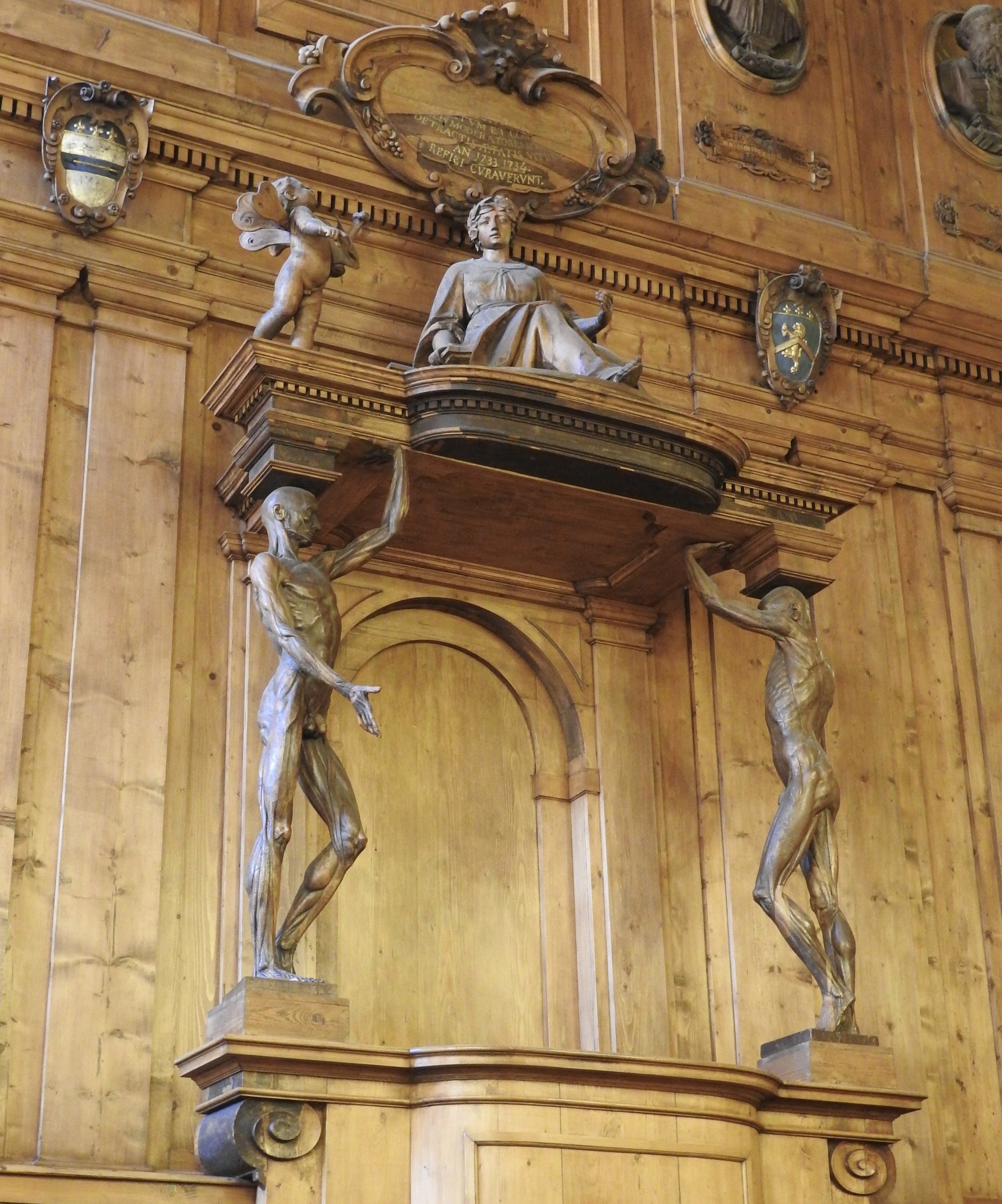
Telamones in the form of spellati (skinless figures) by Ercole Lelli in the anatomical theater of the Archiginnasio, University of Bologna. The canopy they support holds an allegorical figure of Anatomy, along with a putti clutching a bone. See Cushing, Yale Journal of Biology and Medicine, v 9, n 3, 204–05. Photo by Renée DeVoe Mertz.
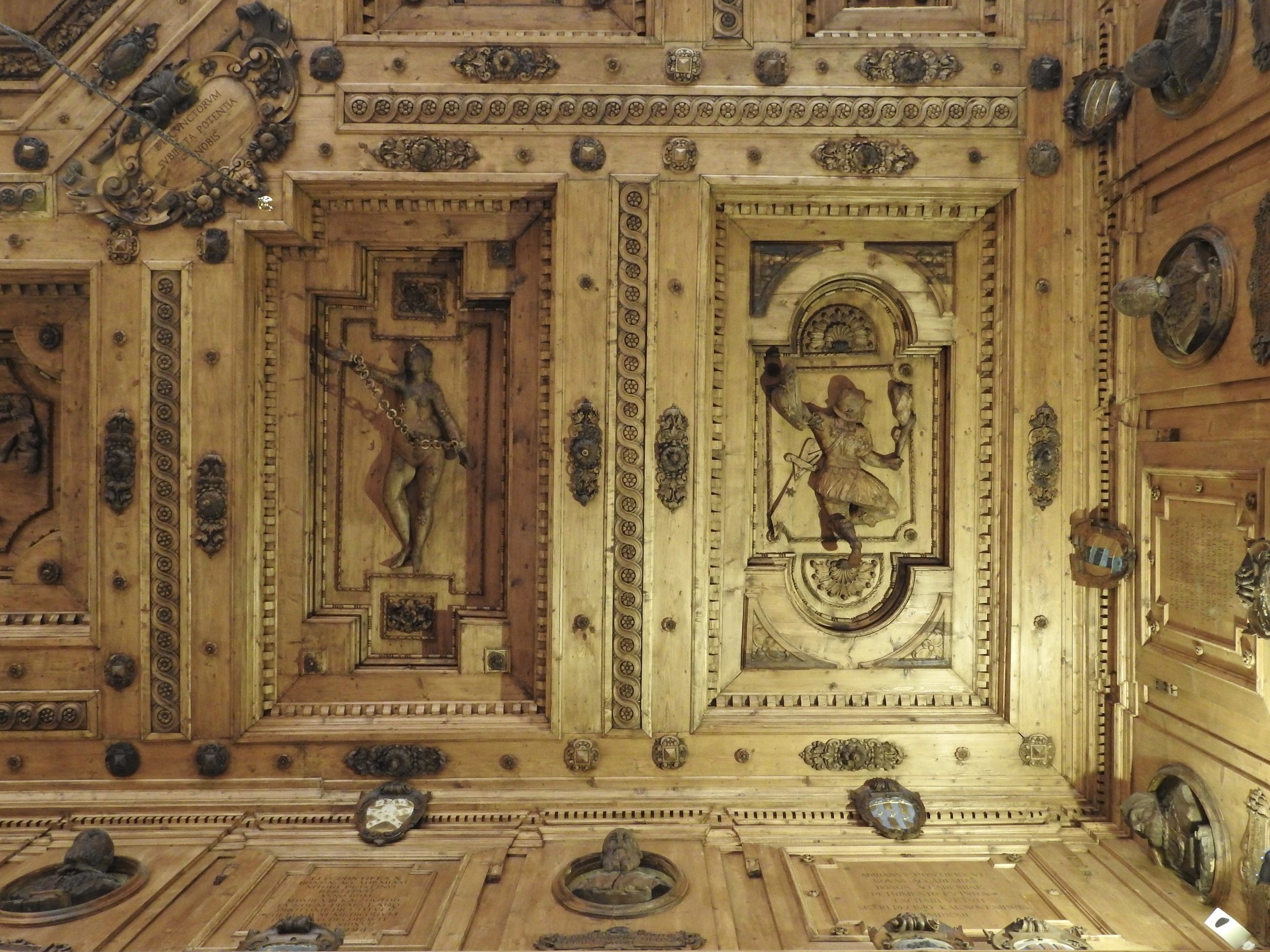
Carved figures on the ceiling of the anatomical theater in the Archiginnasio, University of Bologna. Photo by Renée DeVoe Mertz.
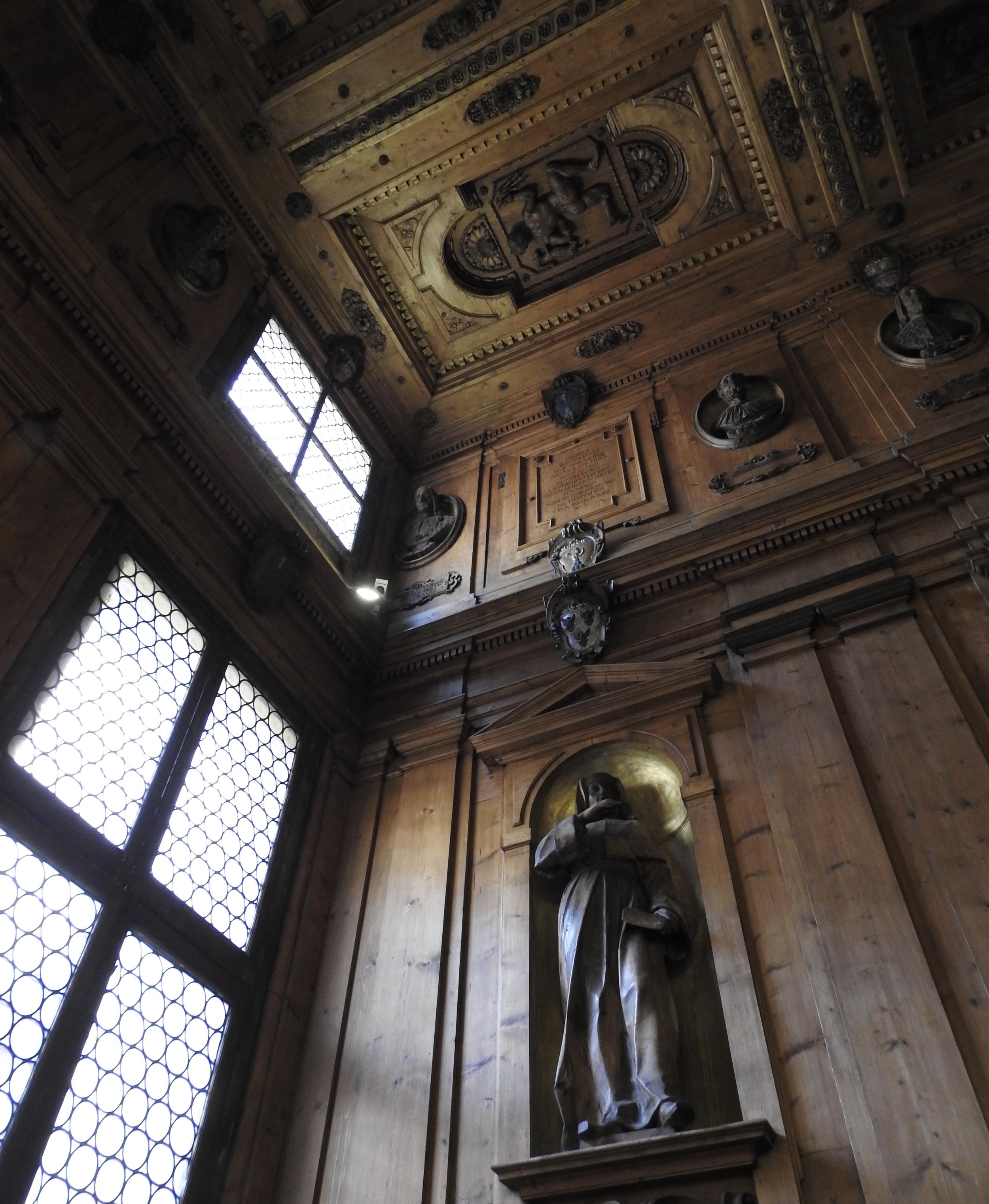
Anatomical theater of the Archiginnasio, University of Bologna. Photo by Renée DeVoe Mertz.

Carved wooden figures on the ceiling of the anatomical theater in the Archiginnasio, University of Bologna. Photo by Renée DeVoe Mertz.
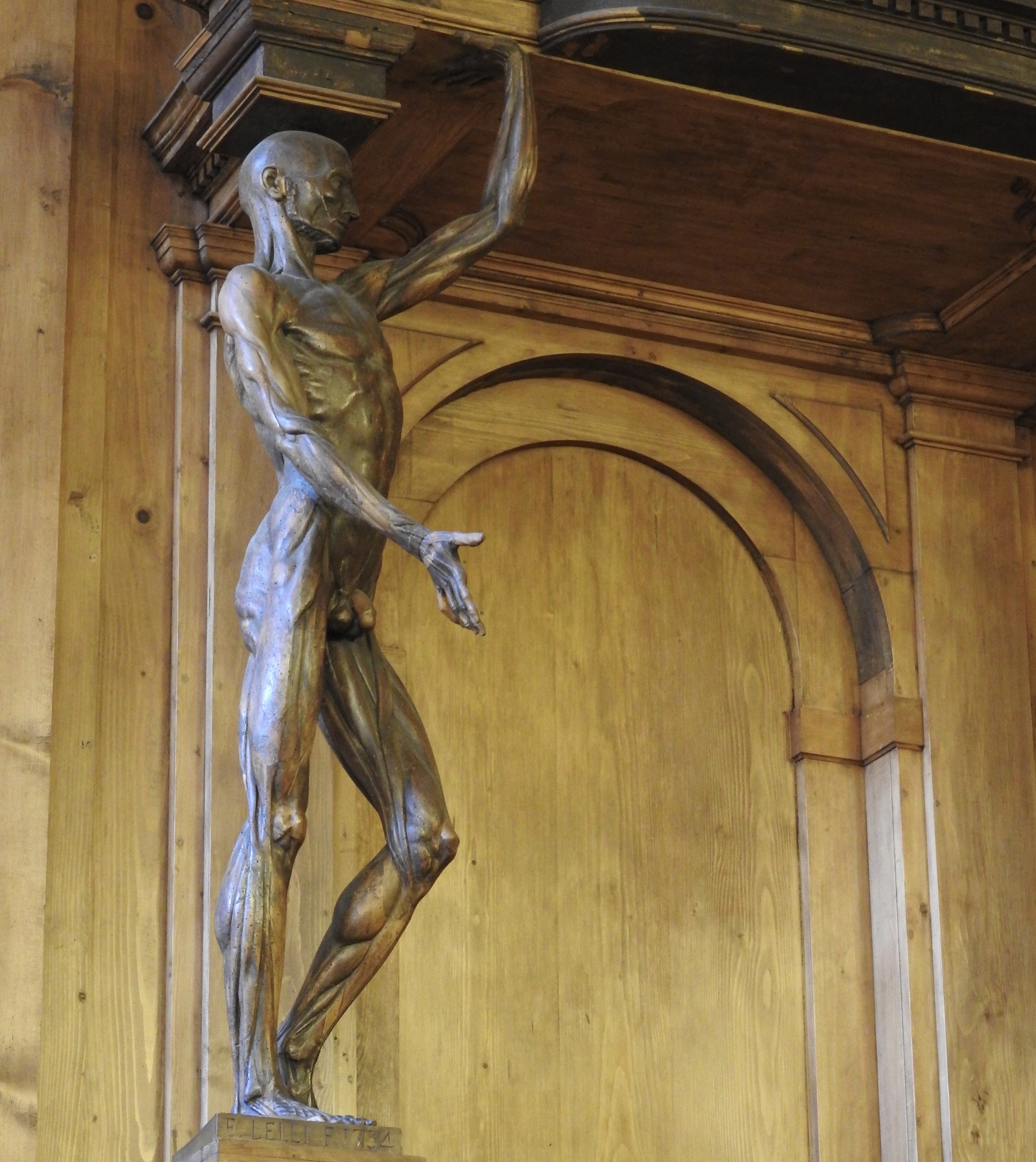
One of two spellati (skinless figures) from 1734 by Ercole Lelli in the anatomical theater of the Archiginnasio, University of Bologna. Lelli later created the standing, full-size, wax-and-bone anatomical figures at Palazzo Poggi. Photo by Renée DeVoe Mertz.
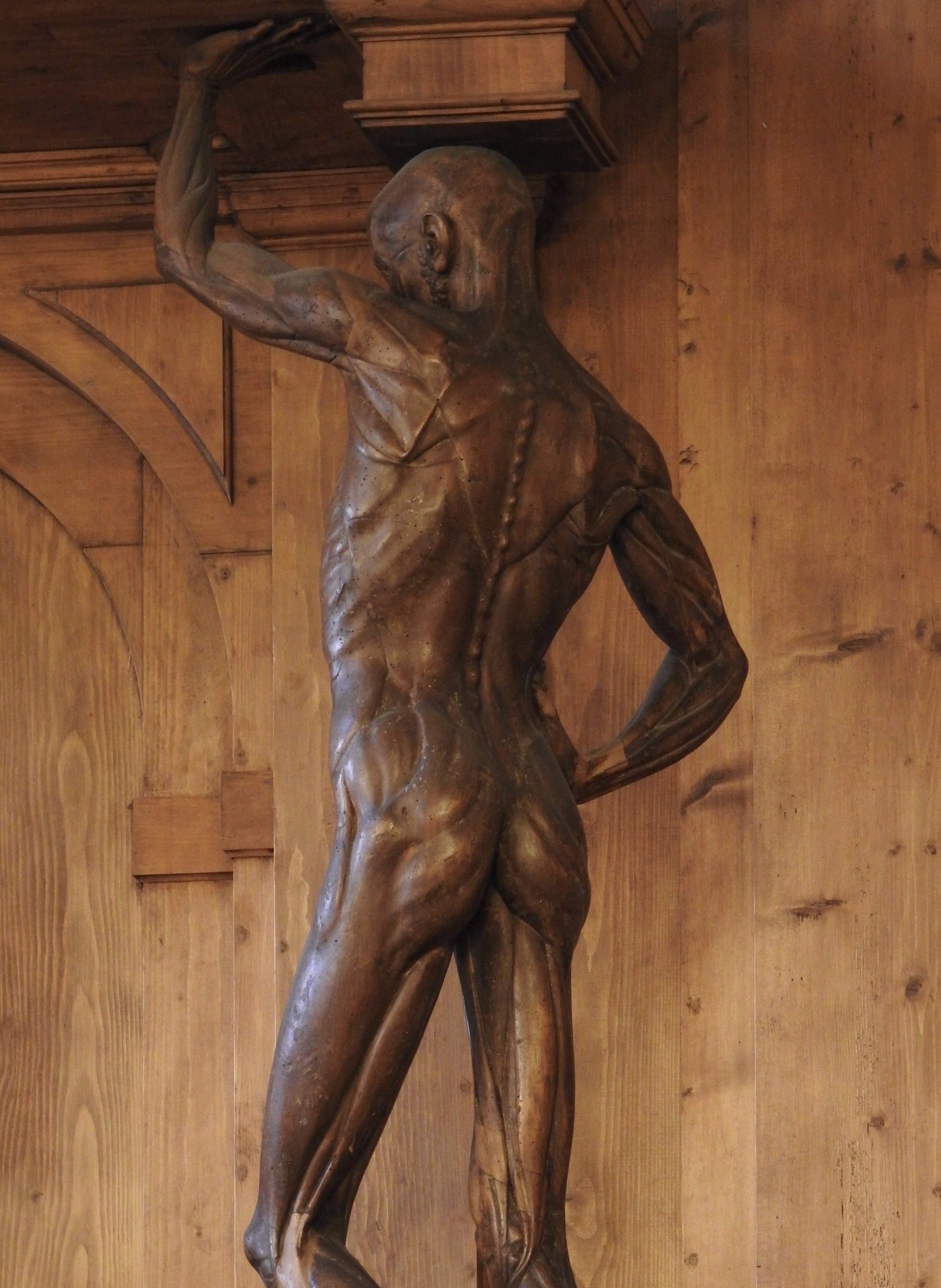
One of two spellati from 1734 by Ercole Lelli in the anatomical theater of the Archiginnasio, University of Bologna. Lelli later created the standing, full-size, wax-and-bone anatomical figures at Palazzo Poggi. Photo by Renée DeVoe Mertz.
